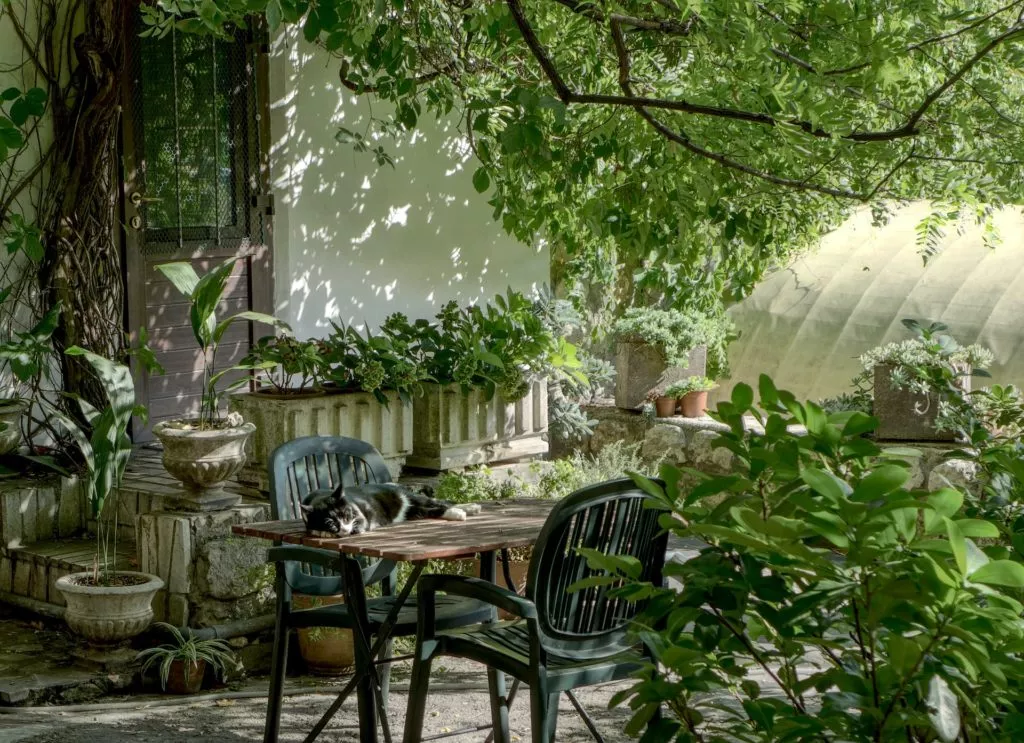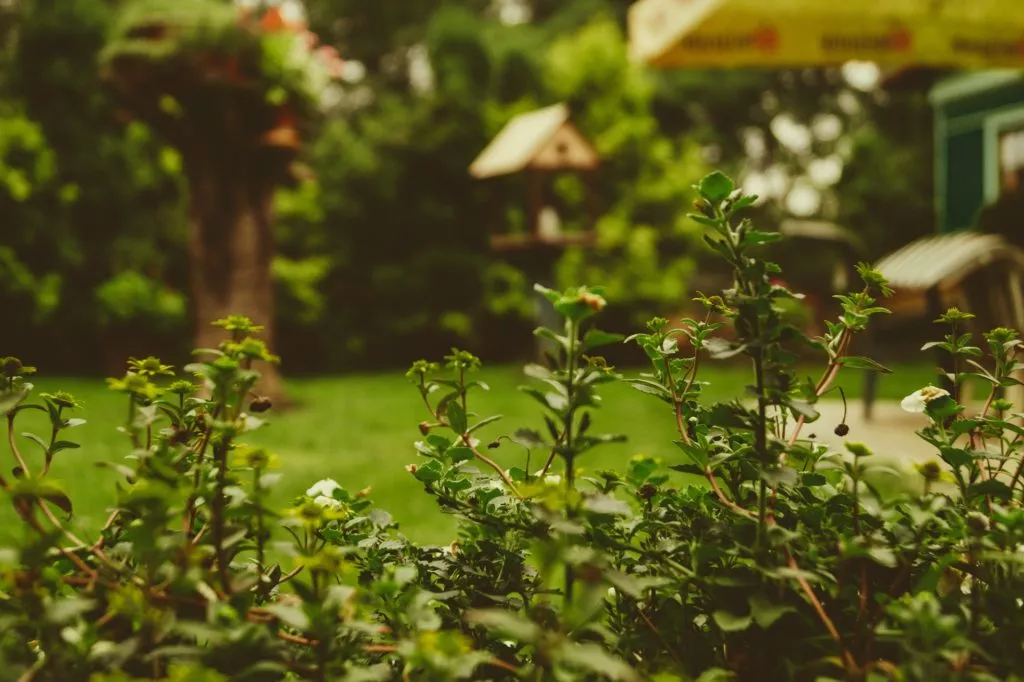Drawing and gardening are both fun and therapeutic activities. So, why not combine both by learning how to draw a garden? You might think it's overwhelming because you're not a trained artist, but with the right tools, resources, and practice, you can create your own masterpiece!
Here are the materials you need to start drawing. You'll find these in arts and crafts stores near you:
- Pencil
- Tracing paper
- Tape
- Eraser
- Acrylic paint or colored pencils
- Measuring tape
- Camera/Phone camera to take a picture of your garden for reference
Optional materials:
- Garden layout pictures for reference and inspiration for new ideas

How to draw a garden
Creating a beautiful garden drawing requires careful planning and visualizing. Start with a good graden plan to make it easy for you to map out how your drawing will look like. Here are some things to consider before planning:
- Climate and weather
- Microclimates
- Soil condition
- Water access and drainage
- Sunlight and shade
Other factors to consider:
- Theme
- Foot traffic patterns
You should consider your local climate before choosing your plants—things like temperature, rainfall, and seasons. When deciding on the foliage to plant in your garden, research what plants can survive in your location. But Hydrangea, Mediterranean Spurge, and Primula Vulgaris are the types of plants and shrubs that can last throughout the seasons.
When designing and landscaping your garden, it's crucial to plant together plants that require similar needs. Some plants do well in direct sunlight, while others may need shaded areas to survive, such as tulips, lavender, moss roses, and sunflowers. At the same time, some flowers may require a lot of water while others don't. You may use different watering devices to meet the needs of different plants.
To scale your garden, you need to measure distances like perimeter, size of existing garden beds, and shapes of your trees and shrubs. Note that three feet are equivalent to one inch. Then write your measurements on paper.
1. Take a photo of your garden
Your photo will serve as a guideline in drawing a plan for your landscape. Take a picture of your house from different angles to have different elevation views and perspective points. This strategy will come in handy when drawing perspective lines.
Elevation view is taking a flat landscape photo to see what your garden will look like while you're in front of it. A perspective point is a detailed 3D view to gain an idea when standing at an angle. After printing your photo, use tracing paper to draw an outline of your garden.
2. Choose a view and draw perspective lines
Perspective drawing gives you an idea of space and depth that will make your garden plan look realistic. There are three fundamental rules when drawing perspective lines:
- Horizon line is the reference point when drawing a three-dimensional image.
- Vanishing point is where all lines meet on the horizon line.
- Vanishing lines are lines intersecting at the vanishing point.
With the printed photo of your house and garden, tape the tracing paper over it and begin outlining a simple garden plan.
For an elevation view, draw a line according to the image's horizon. It's essential to trace permanent structures and hardscapes so you can draw your specific plants around them later.
For a perspective view, use a different picture with a different angle. Then draw the horizontal line and mark the location of your vanishing point.
Finally, draw your perspective lines. But don't forget to trace structures that can't be and don't want to remove from your garden. This sketch will serve as a framework for your gardening plan.
3. Draw the structures and plants
One of the most critical steps in a home garden plan is considering natural and man-made features. These are examples of garden structures:
- Trees
- Shrubs
- Grass
- Green fences
- Benches
- Fences
- Gazebos
- Ponds
- Birdbath
It's essential to think about what you have first. Draw whatever structure you want to keep and add to your garden. Structure your plants as per their purpose and move plants that you want to highlight and layer.
Generally, you'd want to plant larger plants behind smaller ones. Consider how to layer plants that can benefit each other since some plans might be too invasive to others. Arrange plants according to their functionality like aesthetic, utility, and structure.
Aesthetic plants create a pleasant appearance, while utility plants transform the environment for comfort. For example, green fences can be a barrier to privacy and safety, and trees with a big canopy can modify light and temperature.
How to draw a garden can be simple once you get to know the area you're designing.
4. Trace your draft
Your draft is a visual representation of your garden plans. When tracing your final draft, it's important to note who will use your gardens, such as pets, kids, and senior family members.
Ask yourself these questions to give you an idea:
- Is the garden for entertaining people or a meditation space?
- Do you have time to dedicate to maintaining your plants?
- How much budget do you have to invest in your landscape?
- Do you have enough space in your garden?
Some gardens require a lot of maintenance. If you don't have the time or space, choose vegetation that can thrive with minimal attention. Thinking of your lifestyle should help ensure your garden's longevity. Creating a compelling draft is also a good way to work out if you have what it takes to become a landscape designer. Building on core skills might set you up for a career change.
5. Color your drawing
The fun part! Your beautiful landscape design will come to life when you add color.
Most designers use alcohol markers to color their garden plans. But you don't need any fancy coloring materials to finalize your drawing. You may use colored pencils, markers, and even crayons around your kid's art box.

Recommended courses for you
Now that you have some ideas on how to draw a garden, follow up your knowledge with these tutorials and courses.
Drawing Masterclass for Absolute Beginners
This course tutorial is for people who don't have any background experience with drawing. Here you'll learn the basics of observational drawing, sketching realistic images based on what you see or have around you.
This course focuses on exploring your style and your relationship with your medium, in which you'll draw basic geometric shapes to build complex forms.
Take this courseThe Art and Science of Drawing: Dynamic Mark Making
Ever wondered how to draw 3D buildings, objects, and spaces? This course will show you how to master the laws of perspective drawing. By drawing lines, you'll be able to sketch out realistic-looking objects.
You can apply your knowledge in architecture, animation, and comic book drawings by hand or with your computer by learning this course.
Take this courseThe Art and Science of Drawing: Basic Skills
If you want to add value to your property, this course offers you simple step-by-step instructions on designing your gardens. You'll learn how to create different garden areas for various functionalities like a vegetable patch, entertaining, and entrance ways.
By the end of this course, you'll be able to design a garden around existing soft areas for planting and hard features like driveways, paths, and other outdoor structures. Then finally, you'll be able to know which plants can thrive under certain climatic factors.
Take this courseDevelop your lifestyle skills by drawing a garden
Drawing and painting are therapeutic past-time.
If you have enough space on your property, you might as well make use of the area and create a garden plan that the whole family and friends can enjoy.
Knowing how to draw a garden is the first step in making your dream a reality. It's a good lifestyle skill to save you money if you want to transform simple yard spaces into beautiful landscapes. And you'll never know; you might make money out of a hobby.
It's never too late to try to add something new to spend on your downtime. But if you don't have a green thumb, explore other online lifestyle courses to add color to a repetitive routine.


